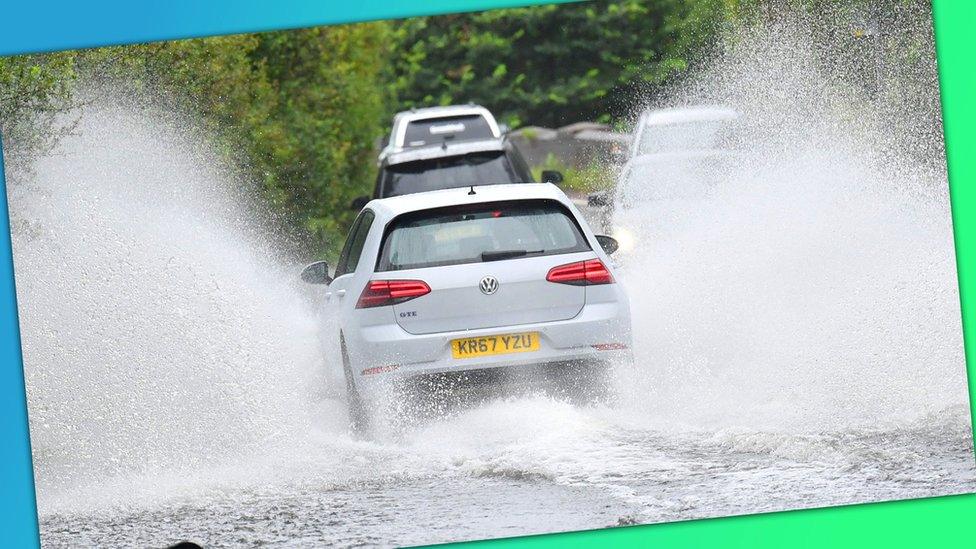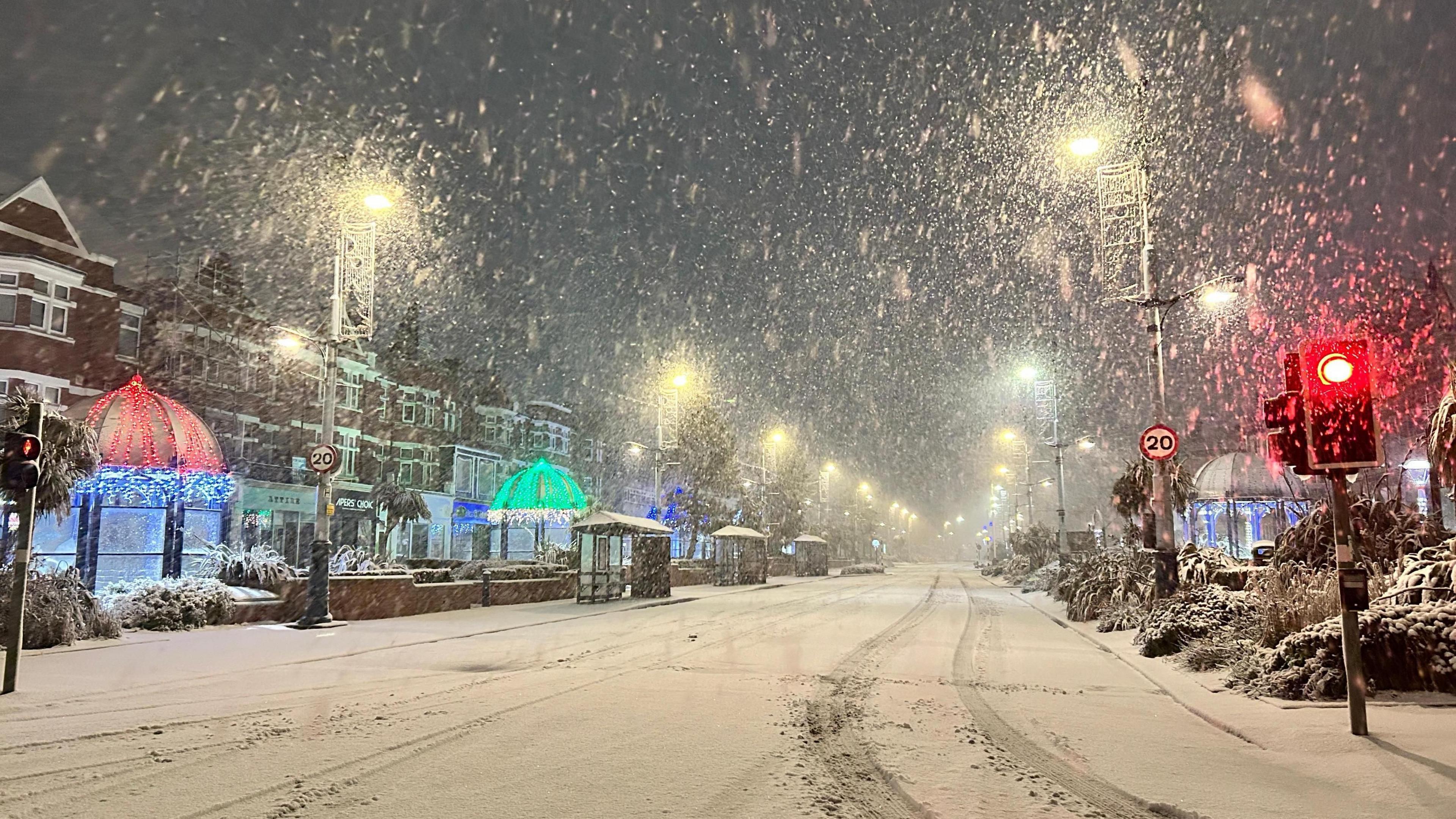Storm Blair: Huge winter storm brings heavy snow to parts of US
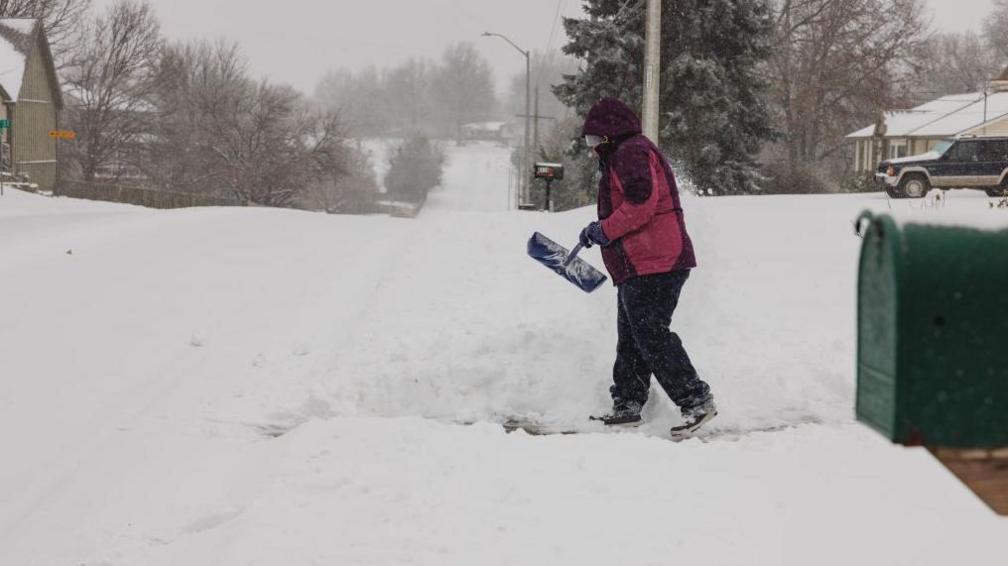
A woman in Kansas shovels snow from her drive
- Published
Parts of the United States are experiencing heavy snowfall and freezing temperatures due to the arrival of a huge winter storm, called Storm Blair.
A state of emergency has been declared in several US states and many schools and roads have been closed.
Major cities like Washington DC and Philadelphia have been hit by the extreme weather.
Forecasters say the icy conditions are being caused by the polar vortex, an area of cold air that circulates around the Arctic.
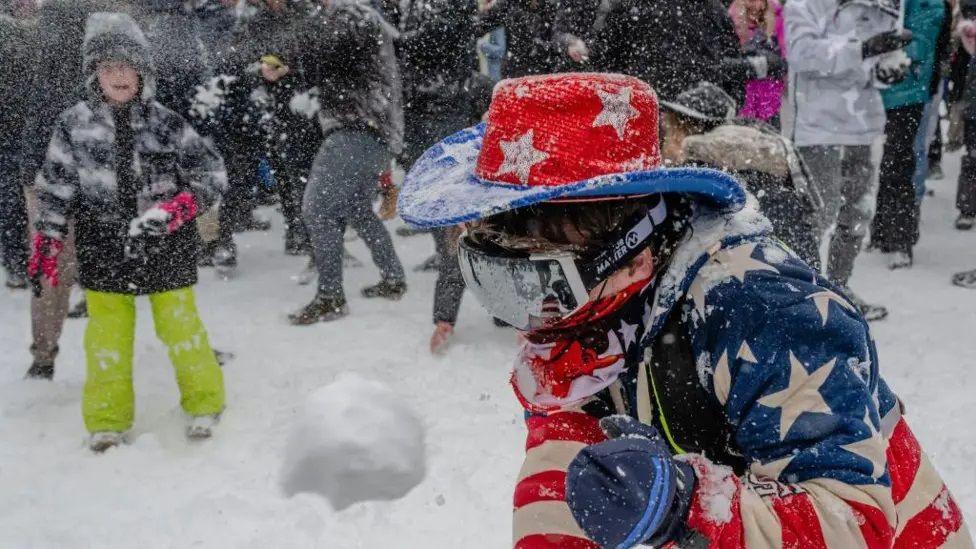
Lots of children got to have a snow day as school districts closed from Maryland to Kansas
More snow stories
Is it snowy where you live?
- Published5 January
How to keep your pets safe in the cold weather
- Published18 December 2024
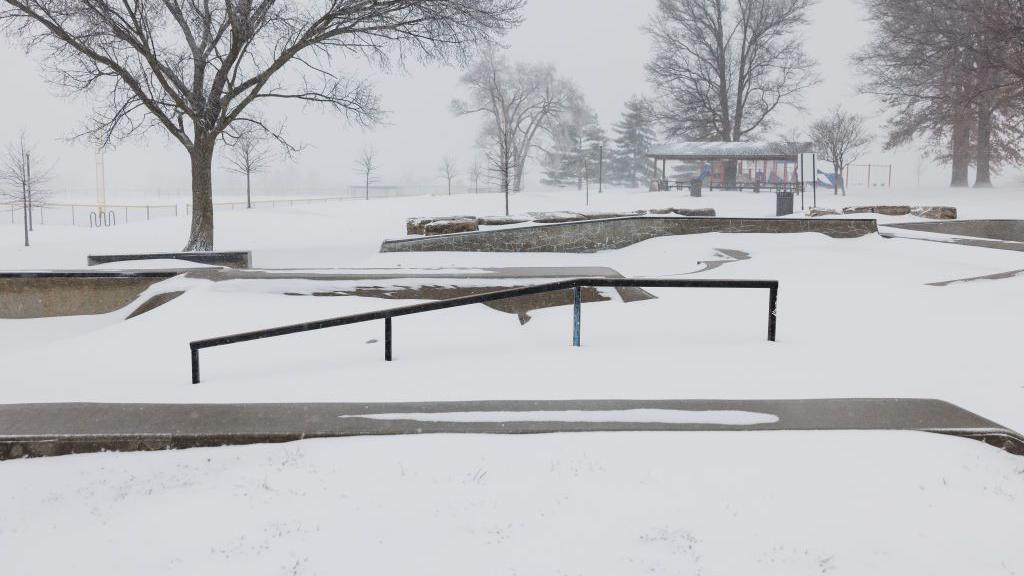
A skatepark covered in snow in Kansas
More than 60 million people are in areas affected by weather alerts.
Forecasters predict the storm could see the heaviest snowfall and coldest temperatures in more than a decade.
People are being advised not to go out on the roads unless it's absolutely necessary.
Around 190,000 people had no power early on Tuesday across states in the storm's path, according to Poweroutage.us
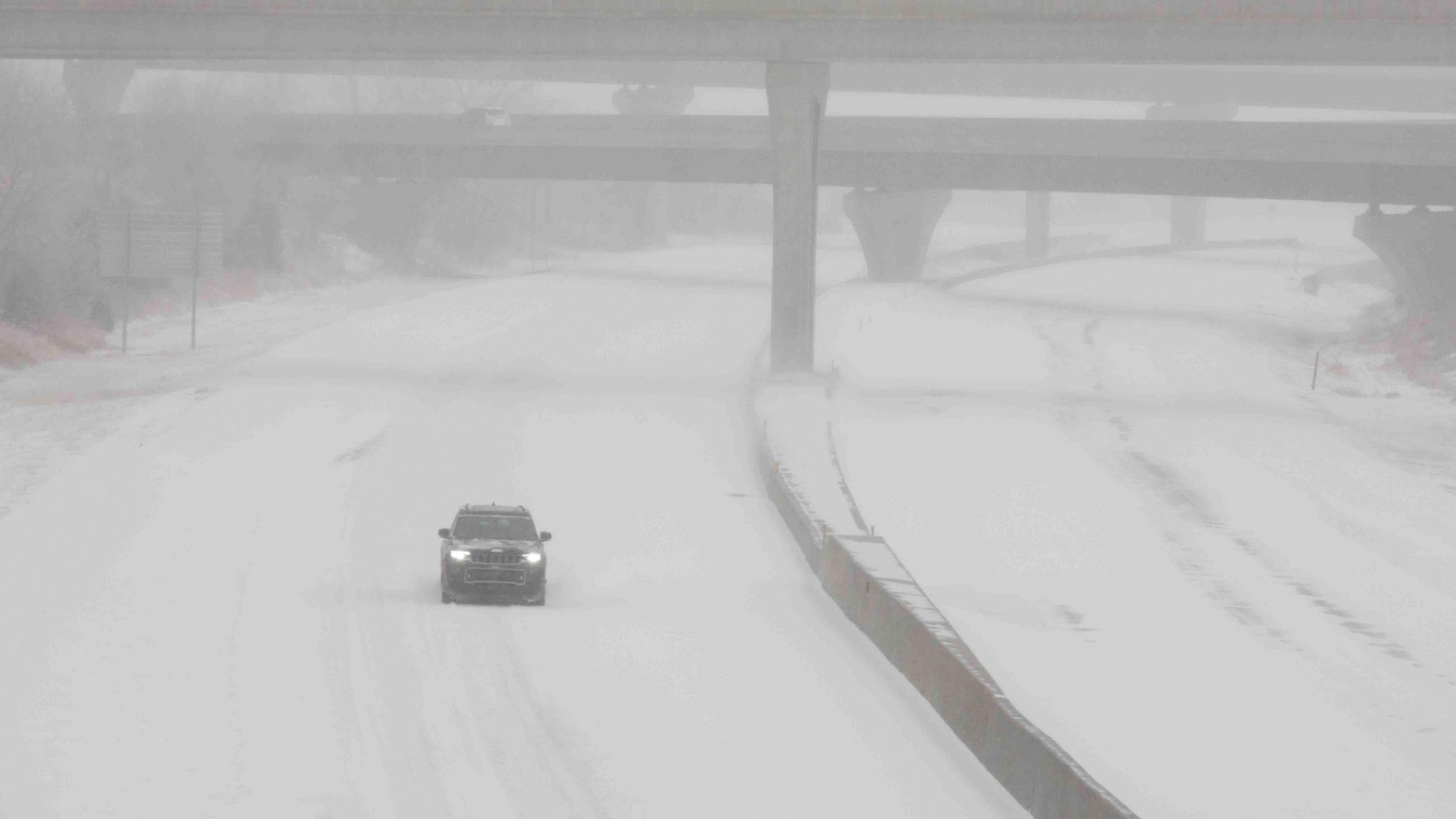
A vehicle travelling on the snowy roads in Kansas
What is the polar vortex?
At the Earth's north and south poles, very cold air circulates as high as 30 miles above the Earth's surface.
The strong wind holding this cold air in place is known as the polar vortex.
It occurs naturally and is strongest during the cold winter months.
The wind in the polar vortex can travel at very fast speeds of more than 150 miles per hour.
But sometimes the polar vortex weakens and allows cold air from the north pole to reach much further south – carried on a strong current of air called the jet stream.
This is what is happening in the US as the jet stream has brought freezing temperatures all the way from the north pole – giving wind and snow.
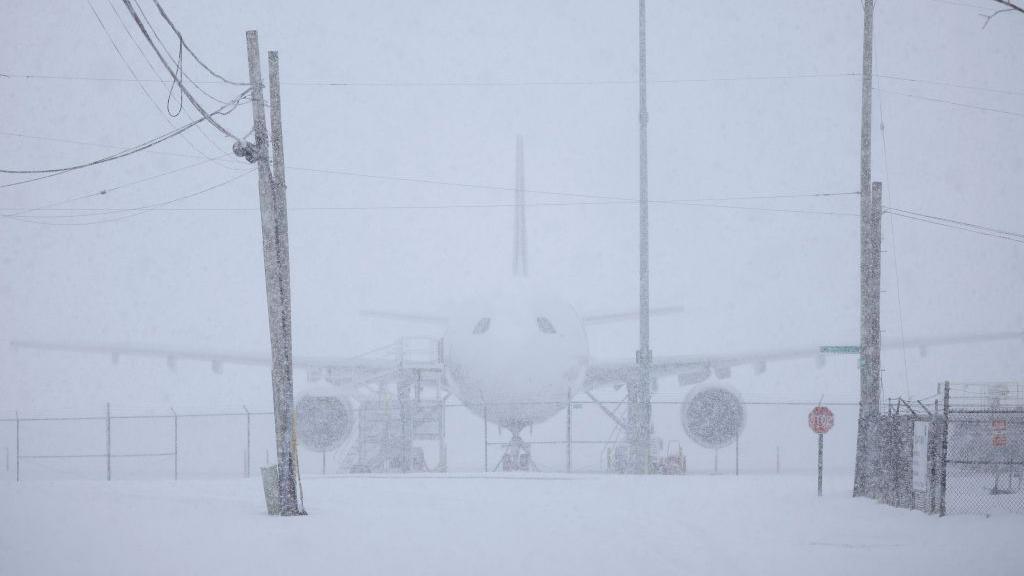
Many flights have been cancelled or delayed due to the weather
What has the response been in the US?
Seven US states declared emergencies: Maryland, Virginia, West Virginia, Kansas, Missouri, Kentucky and Arkansas.
More than 2,300 flights have been cancelled because of the snow.
Local authorities in some of the worst affected areas have also asked the public to stay clear of icy and snow-covered roads.
The US's National Weather Services (NWS) has advised against non-essential travel in Washington DC.
And Washington DC's mayor, Muriel Bowser, reminded residents of the cold weather emergency saying "Temperatures are dangerously low."
Despite the bad weather, US lawmakers in Washington DC travelled to the Capitol to formally certify Donald Trump as the next US president.
This process typically happens two weeks before the president's inauguration on 20 January.
- Published18 January 2024
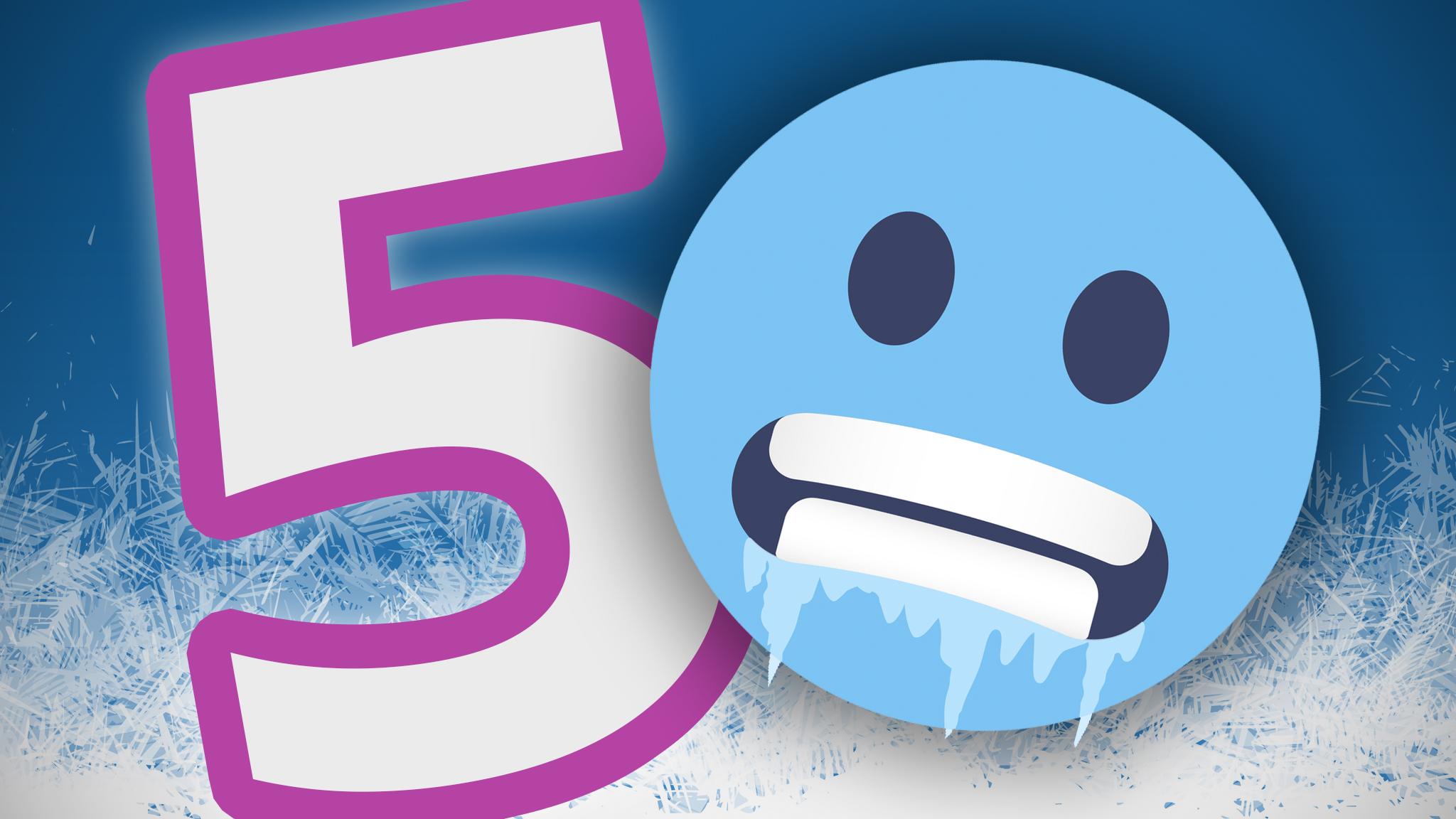
- Published15 November 2023
